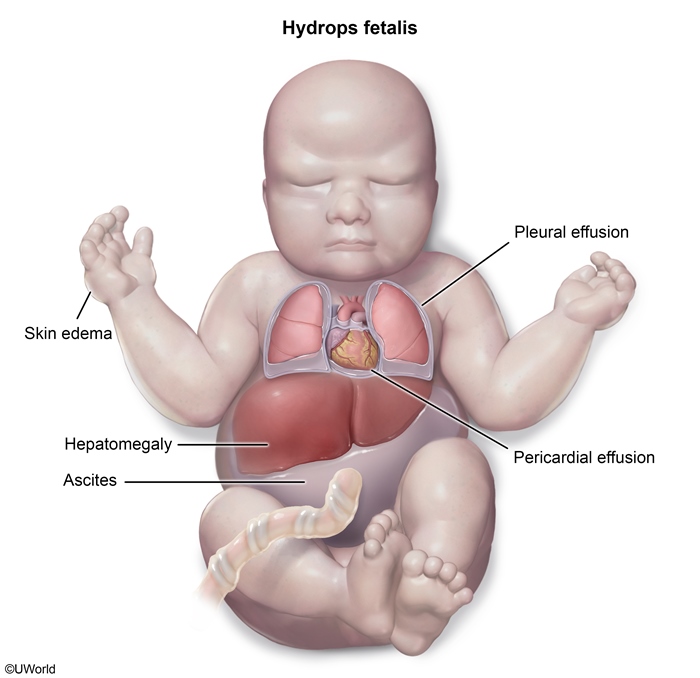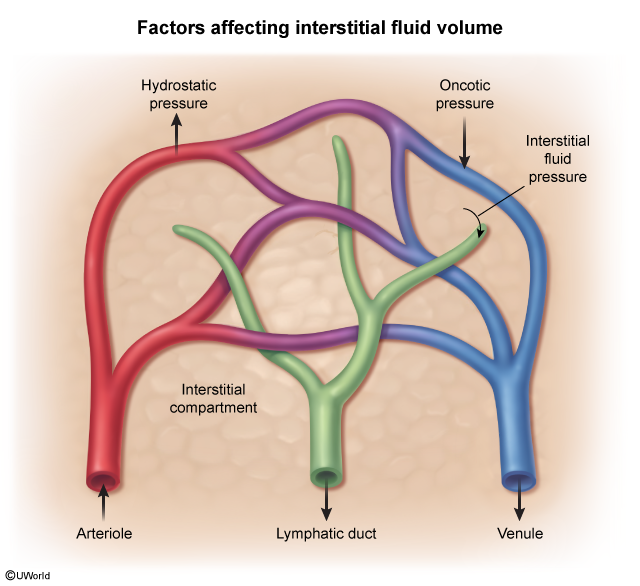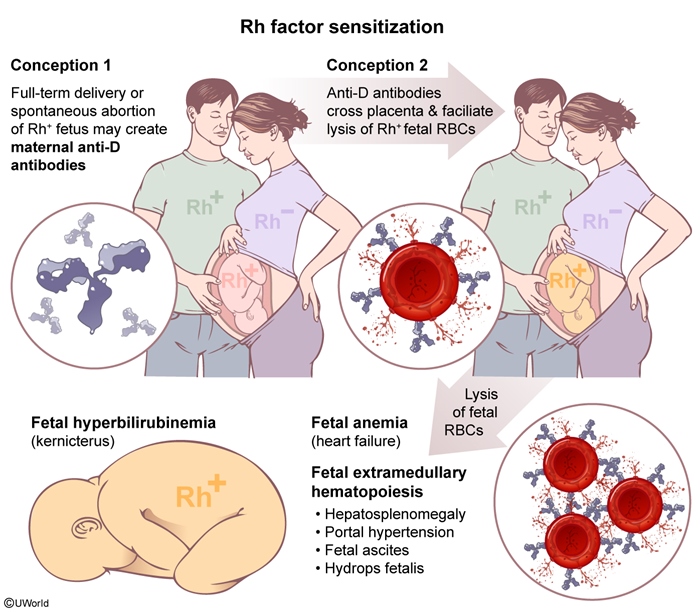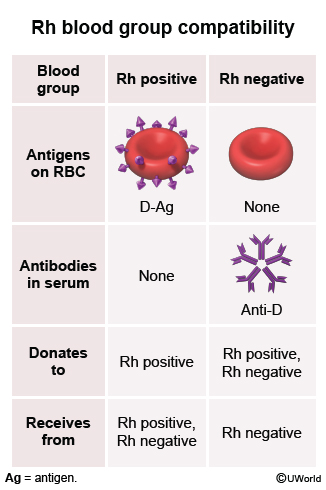Hydrops Fetalis
Article Sections
Introduction
Hydrops fetalis is a severe fetal condition characterized by excessive fluid accumulation in ≥2 fetal compartments, such as the skin, pleura, pericardium, or abdomen (Figure 1). It has various etiologies and is associated with significant perinatal morbidity and mortality.
Pathogenesis
A balance normally exists between fluid moving from the vasculature into the interstitial space and the return of interstitial fluid to the venous system via lymphatic drainage (Figure 2). Hydrops fetalis occurs due to an imbalance between the production and removal of interstitial fluid, leading to generalized edema. Extravascular fluid accumulation can occur through a variety of mechanisms, including:
- Increased capillary leakage, which leads to increased movement of fluid into the interstitial space due to increased capillary permeability, decreased oncotic pressure, or increased capillary hydrostatic pressure. In most cases of hydrops fetalis, this is most commonly a sequlae of high-output heart failure causing elevated central venous pressure.
Continue Learning with UWorld
Get the full Hydrops Fetalis article plus rich visuals, real-world cases, and in-depth insights from medical experts, all available through the UWorld Medical Library.
Figures



